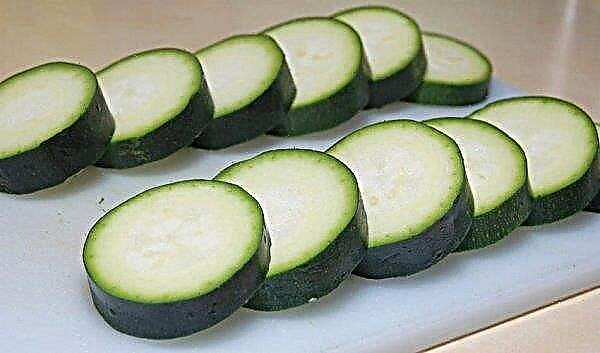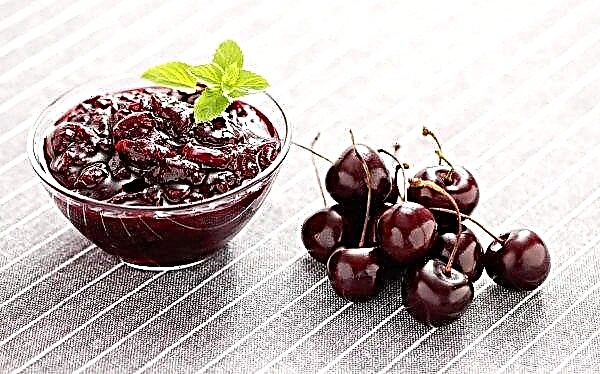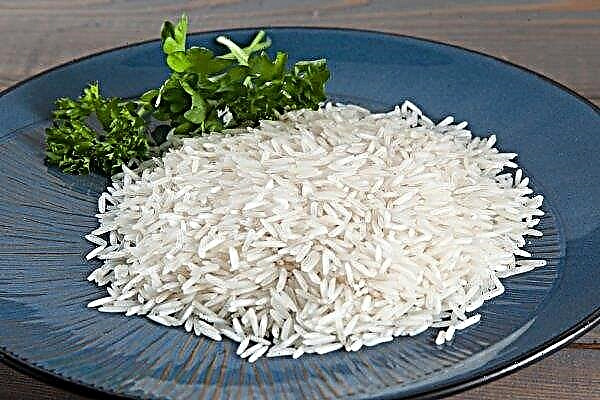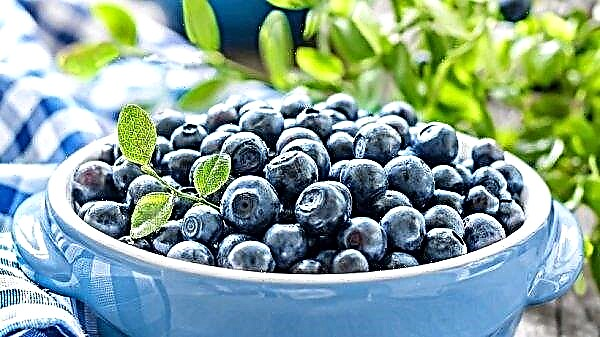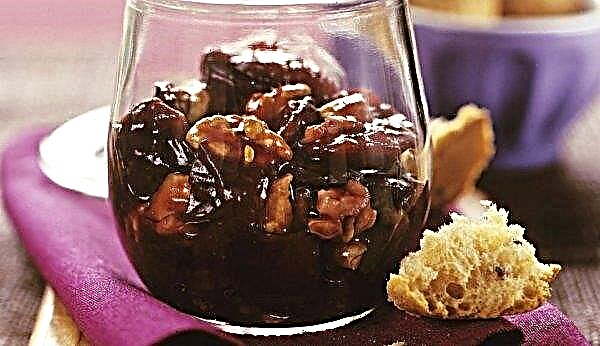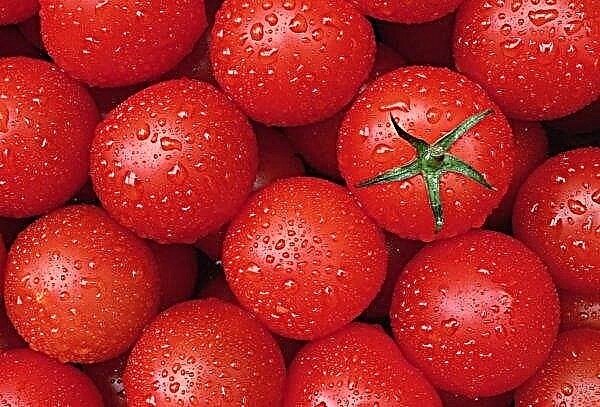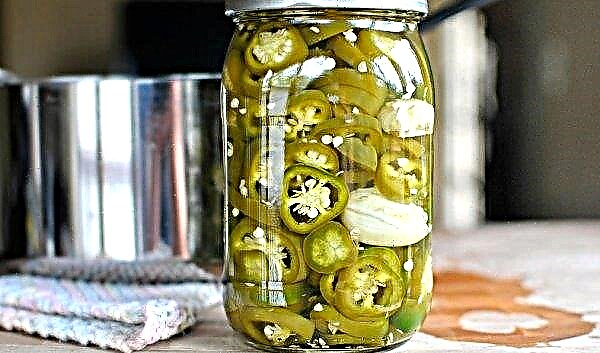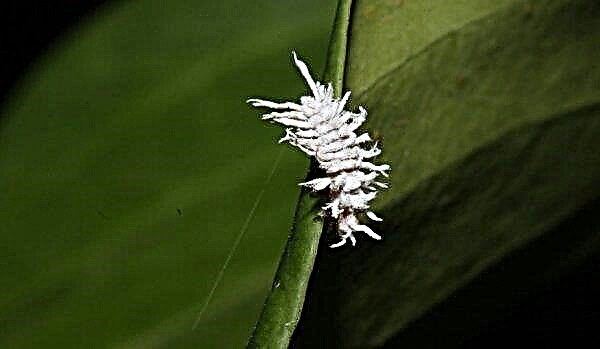Powerful Siberian cedars are known far beyond the borders of Russia. Almost all parts are widely used in them: wood, needles, resin, juice, cones. Recently, the urban area has become their habitat. Read more about how to plant and grow Siberian cedar pine and what are the features of caring for it, read the material.
Botanical description of Siberian pine
The so-called cedar from Siberian forests is actually a pine cedar. This evergreen tree was first described by the Tobolsk Metropolitan Cyprian in the XII century. Novgorod merchants called it cedar because of the similarity of cones and appearance with the tree they already knew. Therefore, they gave the discovered plant the same name. Other similar crops grow in the Far East. For example, Manchurian pine.
The distribution area of the plant is the entire forest zone of Russia. A tree usually grows in group plantings, forming entire forests - cedra. They are also called coniferous taiga. In the north of its range, it grows at low altitudes, usually 100–200 m, while in the south it is a mountain tree that grows at an altitude of 1,000–2,400 m. In adulthood, the tree reaches a height of 30–40 m. The trunk girth is 1.5 m. Cedar pine lives about 800 years. She is very tolerant of severe winter cold and wind. Frost tolerance of the plant is up to -60 ° C.Did you know? The oldest pine tree (Pinus sylvestris) in the world is approximately 4800 years old.
 Siberian cedar also grows in parts of Kazakhstan and Mongolia.
Siberian cedar also grows in parts of Kazakhstan and Mongolia.
Botanical Description:
- Pinus sibirica is a representative of white pines (Pinus subgenus Strobus) and is similar in appearance to them: one straight high trunk, thick branches, dark green needles. In youth, the tree has a conical shape, but with age it becomes wider.
- The bark of cedar pine is brown-gray, with cracks. Shoots when brown, covered with small red hairs. But with age, they darken, and the hairs disappear. Needles are collected in bundles (whorls) of 5 pcs. Each is up to 10 cm long. They are dark green in color and have a bluish tint at the base. In the context of the needle have a triangular section. The life span of the needles is 3 years. Then they crumble, and new ones take their place.
- The root system is pivotal. Multiple lateral and several anchor ones depart from one central root. Like all conifers, the tree is mycorrhizal. This means that its root system interacts with the fungus - mycorrhiza, which processes the substances contained in the soil and gives them to the pine. And in return receives photosynthesis products. Without mycorrhiza, pine cannot grow. Therefore, if you intend to take a seedling for planting from the forest, then you need to grab with it the soil in which it grows. The depth of the root system of an adult pine is up to 3 m.
Like other European white pines, Siberian is very resistant to rust (Cronartium ribicola). This disease is deadly for American white pines, because they do not have immunity to it. Also, the tree is considered resistant to pest damage, and its wood is not amenable to putrefactive processes.
Did you know? In most northern countries, pine is a symbol of wisdom and longevity.
How to bloom
Coniferous blooms are completely unlike deciduous. They do not bloom flowers. It consists in the appearance of male cones, similar to spikelets. They will appear when the air warms up above + 10 ° С, i.e. in the middle of spring. And these spikelets bloom only when the thermometer rises above the + 20 ° C mark. Tentatively this is mid-May. But the farther north, the longer the flowering period shifts in June. Pollen formed on male cones is carried by the wind and pollinates female. Such bumps do not look too bright. They also do not have a floral aroma and do not attract pollinating insects.

What do the bumps look like
Siberian cedar pine is monoecious. This means that on the same tree both male (microstrobils) and female cones (megastrobiles) are formed. The first are formed in the middle of the shoots and look like yellow spikelets. The second are formed at the ends of the branches near the vertex bud. As they develop, they become brown in color. Their length is 6–13 cm, and their width is up to 7 cm. They are characterized by an elongated egg-shaped shape. Cedar cones ripen for a long time - up to 14 months.
Fertilized female cones will give from 30 to 150 seeds (pine nuts). From one large tree in August, you can collect up to 1,500 cones. As they mature, their shell begins to dry out, and they fall to the ground. Forest inhabitants dine on seeds. But only some of them have pine nuts - the main element of the diet.

Average tree growth
The growth of a small annual seedling will be no more than 30 cm. As it grows, it will grow taller and reach a height of 20–25 m by 10 years. Annual growth will be 30–35 cm. The tree will reach a full height of 40–45 m after a longer period of time . Therefore, cedar pine trees are classified as slow-growing plants.
It should also be borne in mind that the height depends on the growing conditions. In the first 10 years in a natural environment, seedlings are closed from sunlight by older deciduous trees. Therefore, he will pick up speed only when he can outgrow them.
Landing
Siberian pine thrives on sandy or gravel loams with good drainage. He does not like heather, poorly drained soils and peat bogs. It tolerates drought.

Suitable time for planting is any time from spring to autumn, until the temperature is above + 10 ° C and frosts are not expected on the soil. It is also believed that in spring the tree tolerates better planting than in summer at high air temperatures. In winter, plants do not bother.
Before landing, they must dig up the site. Remove weeds and stones. Prepare a landing pit. It should be 2 times wider than the root ball and 2.5 times deeper. Pine trees are moderate consumers of water. Therefore, in heavy soil with low throughput, it is necessary to organize drainage so that the roots do not stand in the water. To do this, a drainage layer of small stones or pebbles up to 15–20 cm thick is laid at the bottom of the pit. The removed soil is mixed with compost and sand in equal parts to make it more nutritious.Important! Do not compact the soil when planting. Pine roots hardly develop in dense soil.

The landing process will include several steps:
- After laying the drainage, the soil mixture is poured into the bottom of the pit.
- A seedling removed from the container is installed on it.
- Soil brought from coniferous forest and needles is also added to the pit.
- Gradually filling up the soil, they ensure that the plant is at the same level as it grew in the nursery.
- Water the planted seedling with 1-2 buckets of water.
- Establish a stake to tie a pine to it. This is necessary because an unrooted tree can be damaged by the wind.
- The root zone is sprinkled with a layer of mulch with a thickness of at least 10 cm. It will prevent the soil from drying out and from the growth of weeds.
- The distance between the trees in a row or in a group should be at least 3 m, for a cedar garden - 4 × 4 or 4 × 5 m.

Pine care
Pine care is very simple. It is enough to regularly water, fertilize and take measures to protect against diseases and pests. For winter, small seedlings should take shelter from snow and wind. You can also add sanitary pruning and propagation to this list if necessary. Be sure to lay a layer of mulch under a planted tree. It can be sawdust, needles, straw, and other materials. Mulch will not only help reduce weed growth and preserve soil moisture, but will also prevent root damage during a sharp change in air temperature in winter during thaws. As the tree grows, the width of the mulching layer increases.
Provide the pine with enough water. The seedling is watered 2 times a week, using a bucket of water. An adult tree - as the soil dries up 1-2 times a month. Watering begins in the spring. And finish in October before frosts. Last irrigation is made especially plentiful. Conifers continue to function in the winter, so they will need moisture.

Pines can sometimes turn yellow if the level of acidity (pH) of the soil or the amount of nutrients in it is low. To prevent this, in the first years of growth, feed the tree with balanced fertilizers, where nitrogen, phosphorus and potassium are in equal percentage. For example, 10-10-10. An adult pine tree does not need fertilizers, as it will consume the nutrients released into the soil from the falling needles. During irrigation, it will be crushed, and its nutrients absorbed by the tree.
Please note that pines are pruned only as needed. Do not “shape” them, unless indicated in the recommendations of the variety producer. Young pine always has a conical shape. And at a more mature age, it will be wider. Thinning is used only when the crown is excessively thickened and poorly purged with oxygen.

Breeding methods
Each pine cone contains up to 150 seeds. They spill out from a ripe cone into the soil or are carried by animals and birds. The main distributor of seeds is cedar, a bird of the corvidae family. Seeds of cedar pine are the basis of its diet.
Did you know? Nuts of real cedars are not used for food due to the high resin content in them. They are also not eaten by animals and birds.
When planting seeds, you must follow these steps:
- Put the seeds collected in the fall in a separate container with peat. Seal it tightly and install it on the bottom shelf of the refrigerator for 6 weeks. This process is called stratification. Its task is to improve seed germination.
- Remove container in spring.
- Right before sowing, in April or early May, separate the seeds from the substrate and disinfect 1 day in a 0.4% permanganate solution, then dry them.
- Seeds are planted in prepared pots with a mixture of garden soil, peat and sand, taken in equal parts.
- You can add to the soil: superphosphate (1 g), potash fertilizers (0.5 g), wood ash (2 g), peat (20 g) per meter. The seeding rate is 125–150 seeds per 1 m², the width between lines is 15–20 cm, and the depth is 3 cm.
- Cover the container with foil to create optimal conditions for germination.
- Further care consists of checking the moisture content of the soil. It should not dry out.
- To prevent infection with Fusarium fungi, watering with a 0.4% solution of permanganate (10 l per 1 m²) is used 1-3 times during the first two weeks after planting.
Video: pine seed propagation
In a few weeks shoots will appear. Seedlings will need to be grown for almost a year before being transplanted into a separate container. And they need to be planted in a permanent place after 2-3 years of development, when they reach a height of 30–90 cm.
At their site, gardeners are trying to propagate pine purchased seedlings from the nursery or vaccinations. If you do not have pine trees, then for planting, buy a seedling no older than 2 years. It is better accepted. Or, if possible, dig a tree up to 70 cm tall on the edge of the forest. It is believed that a stand-alone tree is more resistant to disease and will better adapt after transplanting than the one that grows in a group.
Important! Planting by cuttings is effective if the branch is taken from a tree whose age is not older than 10 years.
Use in landscape design
The use of coniferous trees in landscape design is good because they are able to give beauty to your garden in the winter. Therefore, they are often combined with other flowers and shrubs. For example, with roses, hydrangeas, flower beds from crocuses and tulips. Given the size of the pine tree, you can plant it as a separate accent plant near the entrance to a house, hotel or other building. When planting, be sure to consider that a tall plant can interfere with the review and approach the choice of a planting place thoughtfully.

Pine trees are not used for hedges. Therefore, they can be planted only as separate plants with respect to the distance between them. Also step back from wires, sidewalks, and communications systems. Otherwise, you will create a traumatic situation in the future. So, wires can break the top of a pine tree in windy weather.
What is better in the role of building material: cedar or pine
When choosing lumber or wood for various wooden structures, or construction, there is a wide range of wood products. Some types of wood are more suitable for some work, and some for others.
Cedar has a good density and lightness. This makes it an excellent choice in building construction. It is resistant to decay, and its aromatic oil has anti-insecticidal properties and protects things inside the cedar object from insects. This makes it an excellent material for cabinets and other wall coverings.

Features of cedar wood:
- color: reddish or violet brown;
- density: stiff texture and light weight;
- use: pillars for the fence, lining in cabinets and chests, carvings, outdoor furniture, birdhouses, pencils, cabinets, small wooden objects for various purposes.
Siberian cedar pine wood is suitable for a very wide range of projects: from crafts to house construction. This is an inexpensive, easily accessible wood. It is also used for the manufacture of furniture and carpentry.
Important! Please note that pine wood — porous. It easily absorbs water and steam, and cannot be used in rooms with high humidity.
General characteristics of pine wood:
- color: the core of the material is light brown with a slightly reddish tint;
- density: soft, very light;
- use: exterior decoration, furniture, stucco molding, lining, carving, turning, manufacturing of patterns;
- Features: when used as a finish, wood must be sealed with water or oil based polyurethane.

Cedar pine - the owner of many useful qualities. Her volatile will purify the air. Useful nuts will have a healing effect on the body. From young needles you can prepare a healthy healing jam. And use the old one as mulch for other plants in your garden. Growing it is quite simple. You just need to remember to periodically water the tree and prevent diseases and pests.



